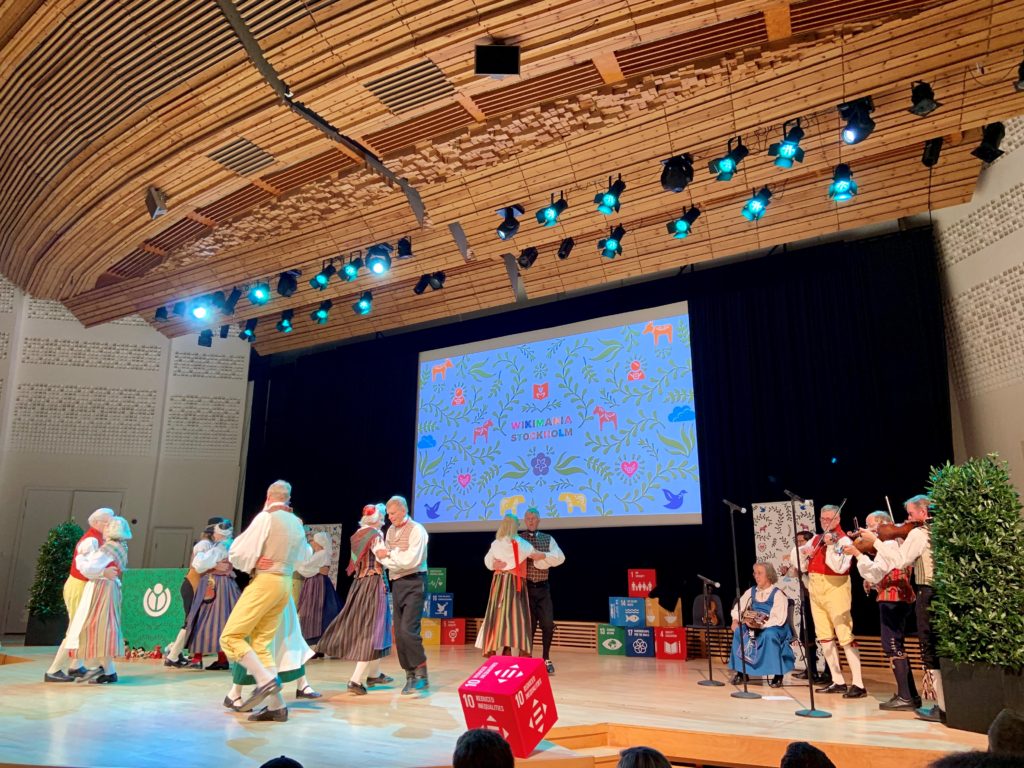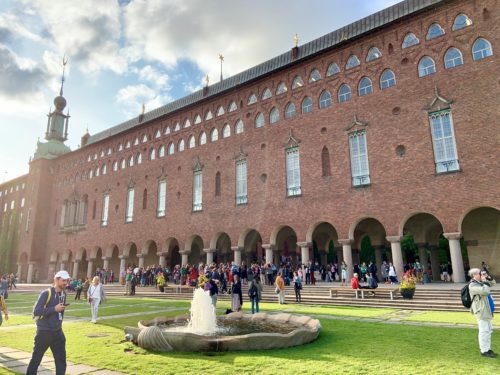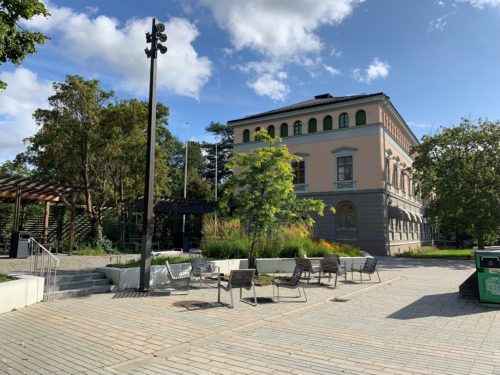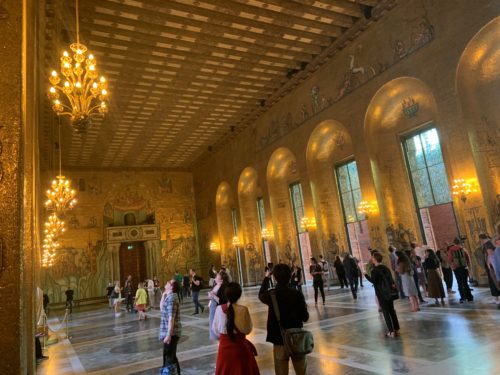
Wikimania, the global conference on all things Wiki, took place in Stockholm last weekend. This year’s theme was “Stronger together: Wikimedia, Free Knowledge and the Sustainable Development Goals“, which linked the free knowledge movement to sustainability. Cultural heritage and GLAM institutions played a significant role in the program.
What’s the link between the Wikimedia movement and cultural heritage? Different Wiki projects have worked together with galleries, libraries, archives or museums in the GLAM-Wiki project with the overarching goal to help institutions share their resources with the world. There are for example Wikimedians in residence who help museums open up their collections or find new audiences for the institutions’ knowledge in Wikipedia articles or for their objects on Wiki Commons. There are countless volunteers making cultural heritage freely available for users worldwide. Editathons for example are one of the formats to connect to local Wikimedians. The strongest link between the Wiki movement and cultural heritage institutions might be the belief and aim to spread knowledge to interested audiences.
The Swedish National Heritage Boards’ colleagues did not only attend Wikimania, but also presented some of the work related to Wiki projects: Evighetsrunor, a project for a new digital platform that offers new possibilities to research runes and their inscriptions, and Metadata Roundtripping, which helps GLAM institutions who contributed data Wiki projects to enrich their own metadata based on volunteers’ work.
Although the program was really packed with a lot of interesting sessions and tracks, there were some aspects especially insightful for the cultural heritage sector. As session were recorded, I present you a choice of sessions to catch up on (videos are going to be uploaded soon). Before getting into the details, I strongly recommend to watch “Why do museums decide to open up their collections“ with Dr. Karin Glasemann, Aleksandra Janus, Lizzy Jongma and Anna Mazgal – my personal highlight of this year’s Wikimania.

#1: Diversify knowledge
Currently, there are several debates on problematic aspects of museum collections, for example concerning indigenous peoples’ objects or lacking marginalised perspectives. So how can we use Wiki projects to include diverse knowledge? Wikimedia Norway for example works together with Sámi communities to raise awareness on editing Wikipedia in their own language and empowering users to saving cultural knowledge. Marc Miquel presented his case on the culture gap: Unfortunately, small and under-resourced communities are not equally represented on Wikipedia, although cultural context content is especially important for visibility of small language Wikipedia editions. He created a tool to increase visibility where articles in these Wikipedias are missing and foster cross-language representation.

#2: Make women visible
Although this aspect is of course entangled with diversity, there was a great amount of projects and individuals dedicated to bridge the gender gap on Wikipedia. In sum, there are less women editors in the movement, the great majority of biographies focuses on men and what is notable enough to have an own article on Wikipedia is not always fitting for female achievements. Hence, several projects try to change this. The Smithsonian for example launched the American Women’s History Initiative. The aim is to research, document, collect, and share American women’s stories from a variety of cultural backgrounds. They have among others a Wikimedian in Residence for Gender Equity, develop and upload more digital resources to Wikimedia projects and are working with volunteers on this topic. Another project to highlight is Wiki Women in Red raising awareness on the women missing on Wikipedia. Museums can contribute own material, such as images or sources concerning these biographies or host editathons.
Watch also: “Experience makes the difference in improving gender equality in Wikipedia“ on WikiGap and Diversity and sources.

#3: Wikidata as a chance for linked open cultural heritage data
Wikidata is the central storage for structured data of Wikimedia projects, for example Wikipedia. It is a free, open and multi-language database; Wikibase is the software behind it. How can cultural heritage data benefit from it? Wikimedia Sverige presented the project Finding GLAMs, the first worldwide database for cultural heritage institutions and collections. Everyone can contribute data about their local GLAMs. Furthermore, the new feature of Wikidata on Commons allows to describe contributed data about e.g. collection objects with structured, machine-readable data. A major success for multilingual descriptions, too!
Watch also: Everyone gets one – Wikibase and the Wikibase Ecosystem and Wikidata for Wikimedia Commons users, Wikidata for beginners
You find the whole program here if you want to get an overview of what happened at Wikimania 2019. The links lead to each session’s program and recordings will appear there as soon as they are online.
What were your favourite sessions? Or which ones would you have loved to attend? Please share your thoughts in the comments!